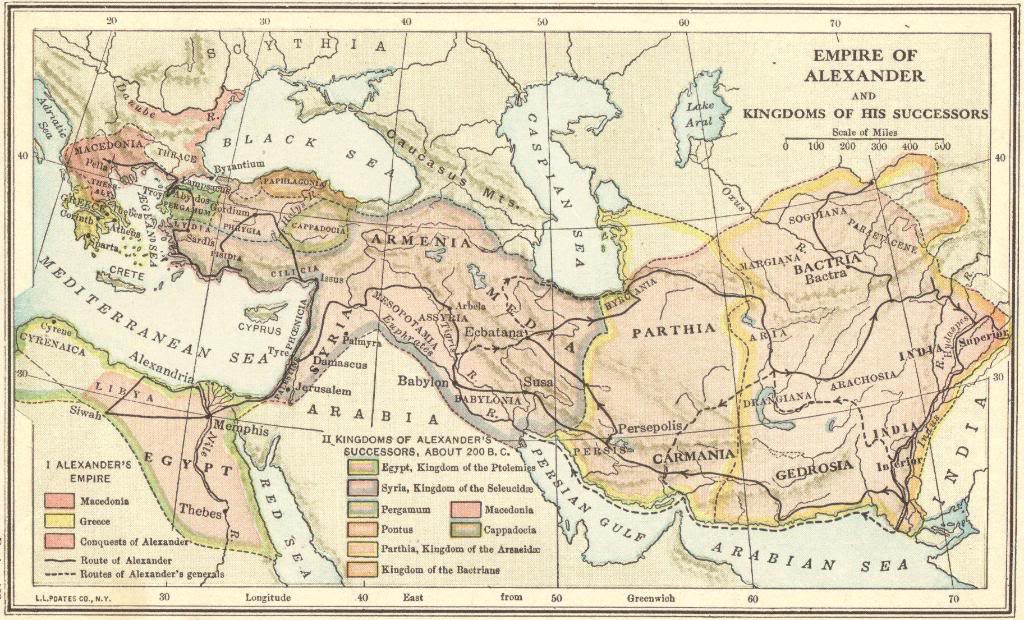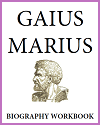Map of the empire of Alexander the Great of Macedon, and the kingdoms of his successors. Egypt, kingdom of the Ptolemies. Syria, kingdom of the Seleucidae. Pergamum. Macedonia. Pontus. Cappadocia. Parthia, kingdom of the Araneidae. Kingdom of the Bactrians. Click here to enlarge.
The geography of Alexander the Great's conquests is vast and varied, encompassing multiple regions across three continents: Europe, Asia, and Africa. Born in Macedonia in 356 B.C., Alexander embarked on his ambitious military campaigns around 334 B.C., aiming to conquer the Persian Empire and beyond. His conquests dramatically reshaped the ancient world and spanned diverse landscapes, cultures, and climates.
Alexander's journey began in Greece and Macedonia, where he solidified his power before crossing into Asia Minor (modern-day Turkey). He defeated the Persian satraps at the Battle of Granicus, moving southward through Anatolia, and capturing key cities like Sardis and Ephesus. His march continued through the mountainous terrain of Cilicia and the Levant, where he famously besieged the island city of Tyre.
In Egypt, Alexander's conquest included the founding of Alexandria, a city that would become a center of Hellenistic culture and learning. He then turned eastward, confronting the Persian King Darius III in decisive battles at Issus and Gaugamela, leading to the fall of the Achaemenid Empire.
Alexander's campaign extended into Mesopotamia, capturing the great cities of Babylon and Susa, and further into the Persian heartland, including Persepolis. His relentless pursuit took him into Central Asia, traversing the rugged terrain of modern-day Afghanistan and Uzbekistan, where he founded several cities, such as Alexandria Eschate.
The final phase of Alexander's conquests pushed into the Indian subcontinent, where he faced the formidable King Porus at the Battle of the Hydaspes River. The geography here was marked by the monsoon-swollen rivers and dense forests of the Punjab region.
Throughout his conquests, Alexander adapted to various geographical challenges, from deserts and mountains to rivers and plains, demonstrating extraordinary military strategy and resilience. His empire, though short-lived, left a lasting impact on the cultural and political landscape of the ancient world, blending Greek and Eastern influences across a vast expanse.
|















